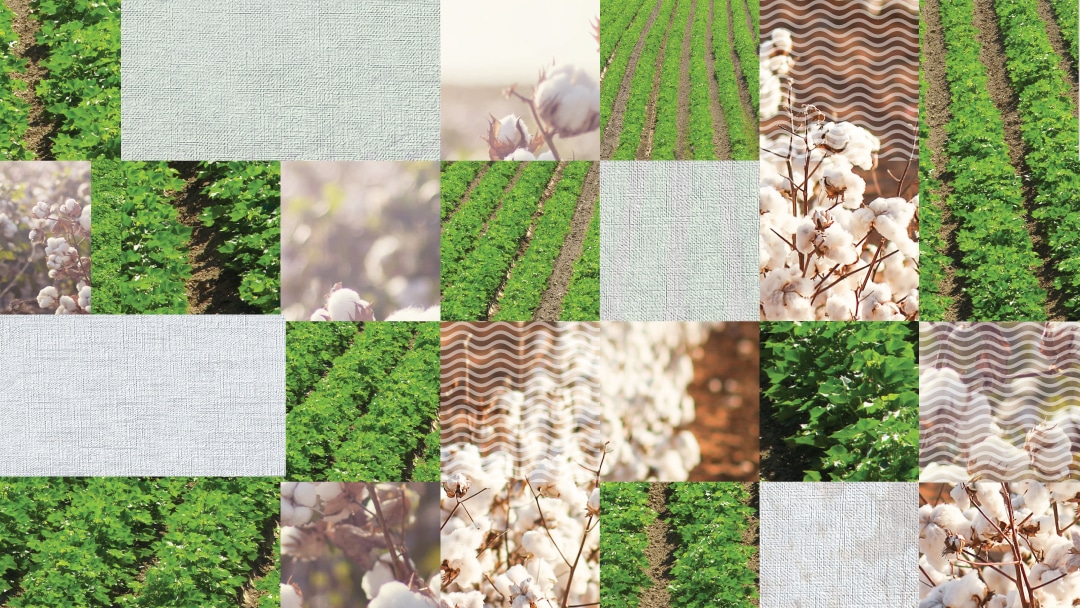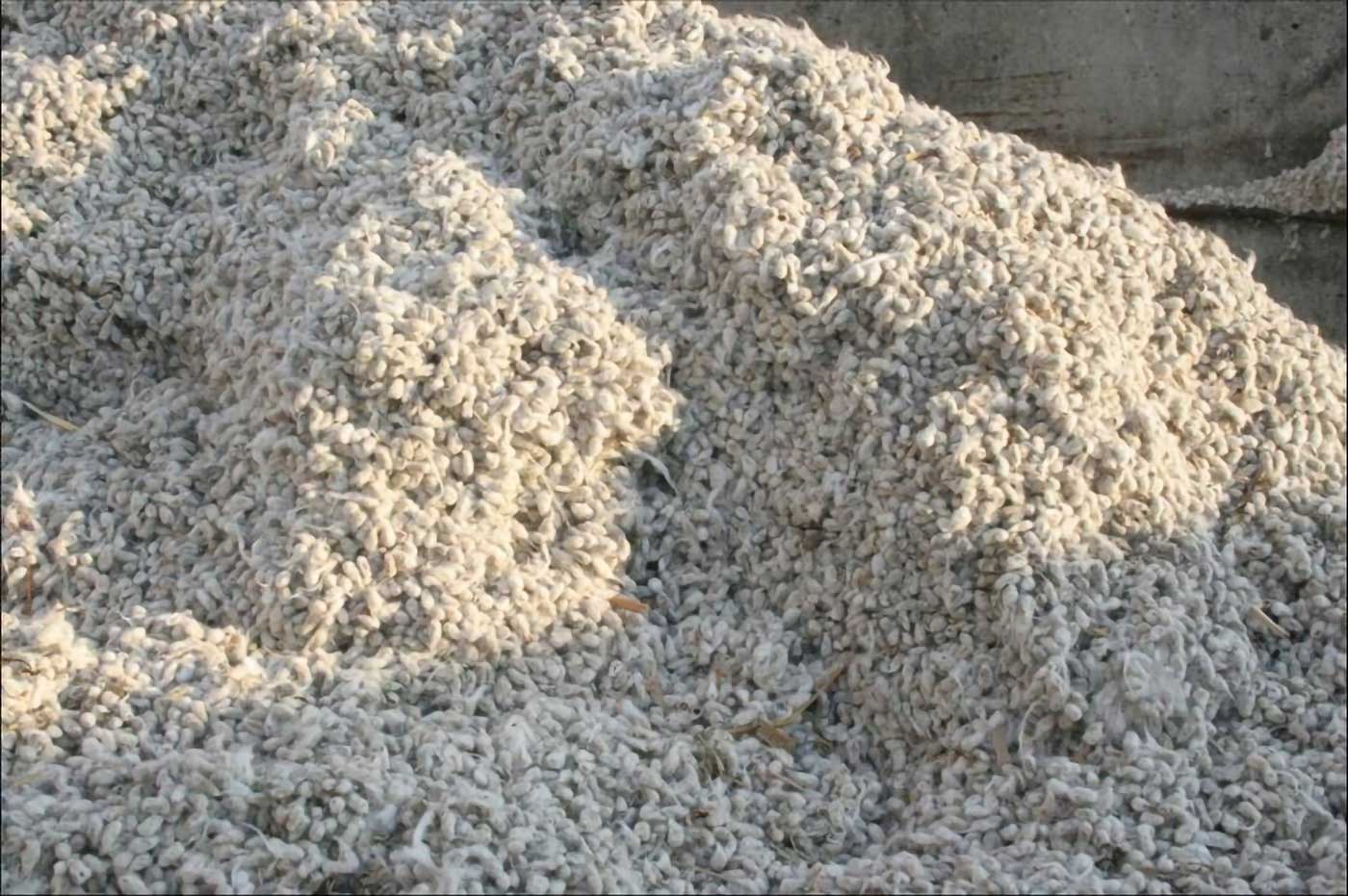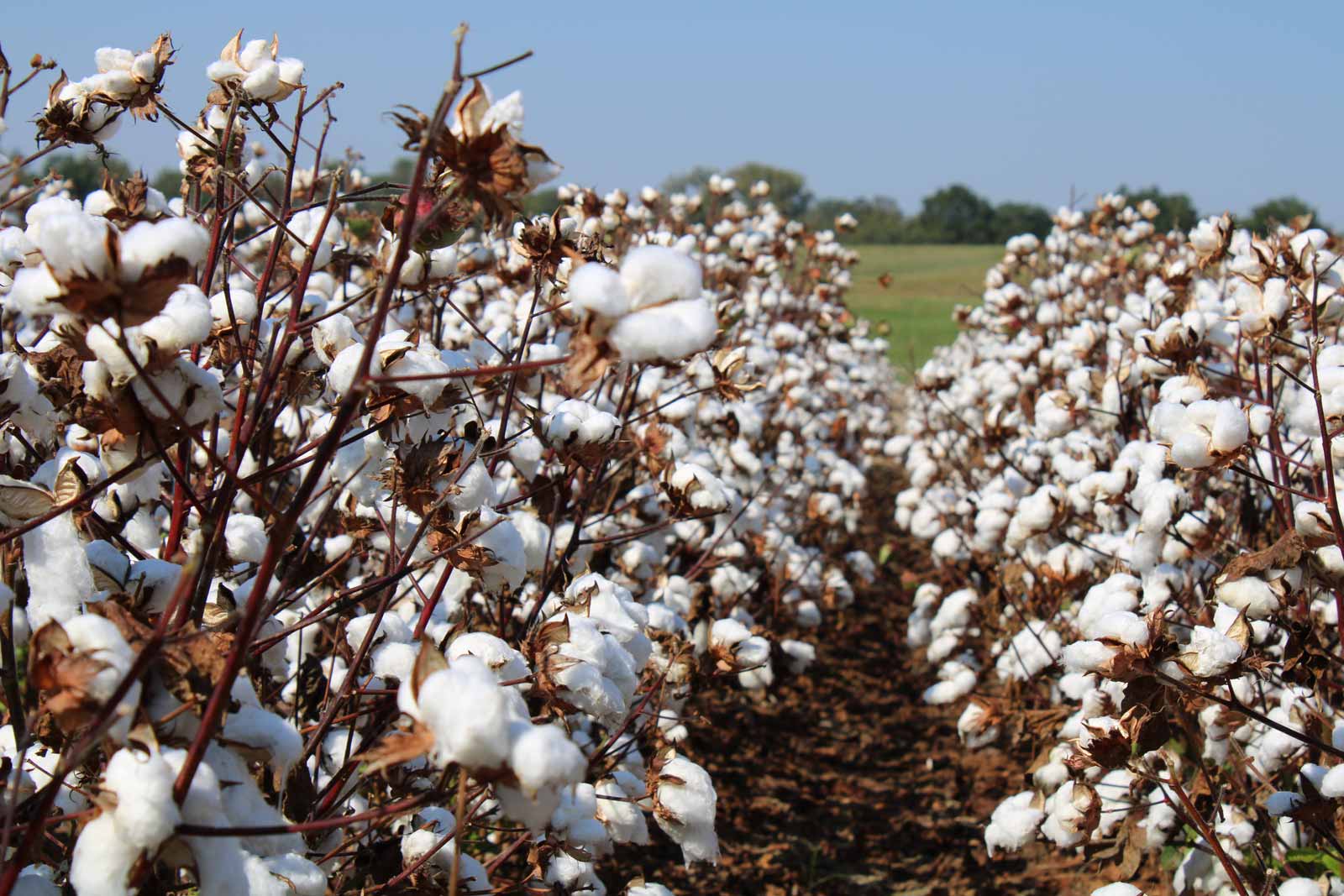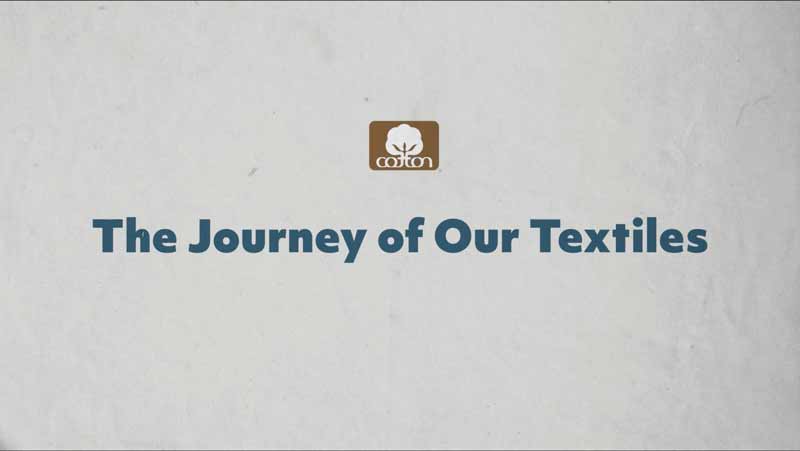The use of fertilizers, pesticides, and water in agriculture isn’t inherently negative. The key to using these resources is to help ensure their efficient, safe, and responsible utilization.
- One size does not fit all: There are great regional differences within countries and even smaller geographical regions. Local context is key to understanding the specifics of cotton production.
- Use only the best and most recent data available but strive to go beyond the numbers to understand the local contexts. Always verify data sources, avoid outdated information without proper context or transparency in methodology, and state disclaimers and limitations when necessary.
- Center decision-making around growers and agricultural experts who possess extensive knowledge of land stewardship. Let them lead strategies and guide support initiatives.
As the Chief Sustainability Officer at Cotton Incorporated, debunking persistent misconceptions surrounding cotton cultivation stands as a significant challenge. The pursuit of sustainable agriculture requires more than good intentions—it demands accurate information. While the journey towards responsible cotton production is ongoing, we’re constantly battling persistent myths and misinformation that hinder progress.
This battle against misinformation is particularly important as our industry advances toward greater sustainability. We must carefully evaluate the full lifecycle impact of innovations in cotton production, including those extending beyond the field. This means looking beyond immediate gains in yield or efficiency and rigorously assessing potential long-term consequences to make fully informed decisions.
The Transformers Foundation’s impactful report, “Cotton: A Case Study in Misinformation,” first released in 2021 and updated again in late 2023, effectively challenges common misconceptions about cotton’s water use, pesticide, and fertilizer use. This ongoing work underscores that the fight against misinformation requires constant vigilance.
Despite commendable efforts to debunk myths surrounding cotton cultivation, such as the work by the Transformers Foundation, misinformation persists. For example, the recent proliferation of inaccurate claims about traditional cotton production, fueled by a story on lab-grown cotton, underscores the critical need for evidence-based discourse. This situation reinforces Cotton Incorporated’s commitment to grounding this discussion in credible, scientifically sound information.
Fertilizer: Balancing Necessity and Responsibility
A common misconception is that all fertilizer use is inherently negative. In reality, fertilizers play a vital role in maintaining soil fertility and optimizing yields in cotton farming. Managing fertilizer applications to minimize environmental impact demands precision. Tailoring fertilizer strategies to specific farm conditions, guided by soil testing, is pivotal. Investing in soil health systems helps ensure a more sustainable future for cotton production, reducing input costs, and enhancing yield.
Precision agricultural mapping can help growers understand precisely where to apply fertilizer and how much to apply, ensuring each plant only receives exactly as much as it needs. Today, almost 73% of U.S. cotton growers indicate that they employ some type of precision technology in their crop management, with most reporting that they use precision technology for the site-specific application of soil nutrients.[1] Using this technology, growers know what their crop needs, at what point crops require additional inputs, and exactly where in their field’s fertilizer needs to be applied. This precision application minimizes excess applied nutrients and improves the sustainability and profitability of the crop.
For example, using ground-based sensors to map soil allows for tailored fertilizer application based on the specific needs of clay, silt, or sandy soils, optimizing nutrient uptake and minimizing waste. This precision prevents over-application and potential runoff, protecting waterways.[2] Additionally, practices like cover cropping and field buffers further mitigate nutrient runoff and enhance soil health, contributing to a more sustainable system.[3]
Growers continue to implement new crop and land management practices to help balance nutrient needs with environmental risks. This includes addressing greenhouse gas (GHG) emissions, a key concern for sustainability professionals seeking to understand their supply chain impacts. While it’s important to acknowledge that GHG emissions from soil are a natural phenomenon occurring even with natural fertilizers like manure, responsible management is crucial for minimizing impact.[4] Simply switching to natural fertilizers won’t eliminate GHG emissions. All fertilizer applications require careful management to prevent imbalances and potential pollution.
The updated Transformers Foundation report notes that application of manure based on one nutrient may lead to over or under-applying other nutrients, and to get the appropriate amount of nitrogen from manure. For example, to apply enough nitrogen in many field conditions, one would have to overapply the potassium and phosphate which could lead to runoff and pollution of waterways.[5] Ultimately, a holistic approach that combines responsible fertilizer use with practices like carbon sequestration within the soil is key to minimizing environmental impact.
Pesticides: Transparency and Continuous Improvement
While pesticides are used in cotton farming, it is important to understand their role in protecting our crops. Pesticides protect crops from weeds, insects, and diseases, and it is estimated that without pesticides, 80% of the world’s cotton crop could be lost to these threats each year.[6] Growers have an obligation to protect their crops from pests to ensure that land used for agriculture is as productive as possible. Thankfully, advancements in integrated pest management and genetically modified crops have significantly reduced the need for insecticide applications. Their use and safety are regulated across the world to manage human and ecosystem risk.
To avoid crop loss and improve production efficiency, many cotton growers have deepened their approach to pest management.[7] Utilizing integrated pest management, growers use pesticides in the most appropriate way prioritizing criteria such as profitability, safety, and sustainability. Integrated pest management helps growers carefully select the right pesticide for the right pests on the right crop, apply them only when and where necessary, and in the appropriate rates as suggested by the pesticide label. The decision to use pesticides also takes into account the pest’s damage potential, product efficacy, potential for pest resistance and the environment.
Misinformation often clouds discussions surrounding pesticide use in cotton farming. According to ICAC, data from 2023 shows that cotton accounts for less than 3.9% of all global pesticides sales. Within the broader umbrella of pesticide usage, cotton accounts for 3.57% of global herbicide sales 6.76% of insecticide sales.[8]For more information around pesticide use in cotton production can be found in Cotton Incorporated’s Pesticides & Cotton Production factsheet.
Governments around the world scrutinize pesticides before placing them on the market. In the U.S. for example, the Environmental Protection Agency (EPA) conducts in-depth worst-case studies – vetted by numerous third-party scientific expert review panels – to determine when, how and if a pesticide can be safely used taking especially into account interaction with humans, plants, pollinators, water, animals and protected species. To be on the safe side, the EPA exaggerates the risk for sensitive populations by including 10X safety factors.[9] In Australia, the Australian Pesticides and Veterinary Medicines Authority (APVMA) takes a similar approach, whereby only registered and assessed products can be used, and only according to safety guidelines, established following rigorous evaluation by expert panels.[10]
Countless improvements have been identified for pesticide use around the world. Between 1992 and 2019, Australian cotton growers have for example reduced their use of insecticides as measured in grams/bale by 97%. Australian use of all types of pesticides went down by 18.2% (g a.i./kg cotton) in just five years between 2014 and 2019.[11]
One of the reasons for the significant reduction in the use of insecticides is the global introduction of Bt cotton. Bt, a bacterium known as Bacillus thuringiensis, produces a protein that is toxic to certain insects, chiefly worm pests, that harm the cotton plant. The use of Bt cotton is permitted in organic agriculture as a naturally derived insecticide. In the 1990s, scientists were able to move the gene that encodes Bt directly into a plant. After rigorous scientific evaluation, Btcotton was placed on the market in 1996, allowing the plants to protect themselves with a significantly lower need for insecticides. Together with integrated pest management practices and other improvements, Bt cotton helped drive down insecticide applications in the U.S. by 66% in terms of pounds/acre between 1994 and 2019.[12] Overall, while U.S. cotton production has risen, the total volume of insecticides used has declined.[13]
To protect the cotton plant when it is first planted and is most vulnerable to diseases and pests, seed manufacturers coat seeds with minute amounts of pesticides before they are planted. This ensures that the cotton plant more efficiently receives the pesticide and greatly reduces the amount of pesticide applied per hectare at planting and the need to treat crops later. Treating the seed can help reduce the risk associated with protecting the crop at this early stage.
Growers also increasingly benefit from new pest management technologies such as robotics and artificial intelligence. Blue River Technology’s See & Spray is one such example – by using cameras, sensors and other sophisticated equipment it identifies and targets only those weeds that threaten the cotton plant. Estimates suggest this could lead to a 90% reduction in chemical use.[14]
It’s a common misconception that all cotton-farming regions use the same types and amounts of pesticides. It is crucial to recognize that there is no one-size-fits-all solution to reducing pesticide use, and that each region and crop may require a unique approach. By leveraging integrated pest management strategies and innovative technologies, growers are successfully minimizing pesticide use across various regions and crops, tailoring their approaches to their specific needs and local environments.
Water Consumption: Embracing Sustainable Practices
Perhaps the most persistent myth surrounding cotton is its alleged excessive water consumption. In reality, in the past 40 years, U.S. cotton producers have reduced their irrigation water use by 58% per acre inch per lbs. of lint.[15] The U.S. cotton industry set a ten-year sustainability goal to further decrease water use by 18% by 2025.[16] In the U.S., 64% of cotton produced requires no irrigation, 31% receives supplemental irrigation, and only 5% is fully irrigated.[17] [18]
Misconceptions about cotton’s water usage persistently circulate across both traditional and social media platforms, despite concerted efforts to rectify this misinformation with scientific evidence. Water is an important and renewable resource, and cotton growers strive to use it responsibly. Most U.S. cotton is produced using only natural rainfall.[19] With just one acre-inch of rain, modern cotton varieties tend to yield at least 50 pounds of lint and 75 pounds of seed[20] – enough to make more than 170 t-shirts and feed more than 10 cows.[21]Using irrigation methods such as LEPA-equipped (low-energy precision application) center-pivot sprinklers and drip irrigation systems allow growers to use less water and can potentially increase yield, which may help them improve water efficiency. No-till farming and improved soil health can also optimize water use.[22]
Understanding cotton’s water usage involves considering various factors beyond just the immediate consumption by the crop itself. Factors such as the water sources used for irrigation, the sustainability of withdrawal rates from these sources, the impact on local ecosystems, and potential competition or impact on other water uses in the region are crucial to fully grasp the implications of cotton cultivation on water resources.
Call to Action: Championing Sustainability
The Transformers Foundation report transcends mere exposure to misinformation—it serves as a call to action. It champions localized data collection, transparency, and a revitalized emphasis on soil health. Within their report, they provide insightful guidance on data due diligence, which I have shared here:
- Define your research question or problem statement: Identify the type of data you need to collect and the sources you need to consult.
- Identify potential data sources: Consider where you might find the data you need. This could include published reports, government databases, academic journals, or industry associations.
- Evaluate the quality of the data sources: Assess the credibility and reliability. Check for biases, conflicts of interest, and potential sources of error.
- Assess the quality of the data itself: Once you have identified potential data sources, evaluate the quality of the data itself. Check for accuracy, completeness, and consistency.
- Document your sources and findings: Always share the original source of your data.
- Data Use and Privacy: Growers should have control over how their data is collected, stored, and used. Clear consent mechanisms should be established to ensure that growers explicitly agree to share their data and understand how it will be utilized, as well as ideally obtain value from sharing the data.
- Update your research as needed: Data can change over time, so it’s important to update your research as new data becomes available or as circumstances change.
Additionally, they have commendably outlined several crucial actions for the industry to consider:
- Brands and Retailers should conduct thorough due diligence versus taking numbers at face value to inform their cotton-sourcing decisions and ensure cotton is ethically produced, which requires localized and context-specific data collection and analysis.
- NGOs should use accurate and up-to-date data, while going beyond the numbers to speak to the experts on the ground, to inform advocacy efforts and support initiatives that promote sustainable cotton production.
- Media should follow the Transformers Foundation’s recommended due diligence measures above to ensure the data they are using in their arguments is credible and reliable while citing the original source, as well as updating articles as data changes over time.
Furthermore, brands and retailers should consider partnering with cotton programs such as the U.S. Cotton Trust Protocol. Such partnerships mark an essential step towards responsible growing practices and data transparency. Sustainable cotton programs offer support and education to growers, enabling data collection mechanisms that provide insights into water usage, GHG emissions, soil health and more. Establishing tangible connections with growers through a traceable supply chain network is vital, placing fashion professionals closer to the source and fostering responsible sourcing practices.
I implore all stakeholders to challenge the misinformation surrounding cotton cultivation by championing transparency, adopting localized strategies, and placing renewed emphasis on soil health. Together, by setting the record straight, we pave the way for a more sustainable and informed future for cotton.

Jesse Daystar – Vice President, Chief Sustainability Officer
[1] Roberts, Roland K., Burton C. English, James A. Larson, and Rebecca L. Cochran. (2003). Use of Precision Farming Technologies by Cotton Farmers.” Beltwide Cotton Conferences: pp. 288–95. https://doi.org/10.13031/2013.13978.
[2] Barnes, Edward M.; Sudduth, Kenneth A.; Hummel, John W.; Lesch, Scott M.; Corwin, Dennis L.; Yang, Chenghai; Daughtry, Craig S.T.; Bausch, Walter C. (2003). Remote and Ground-Based Sensor Techniques to Map Soil Properties, Photogrammetric Engineering and Remote Sensing 69(6).
[3] EPA. (n.d.). The Sources and Solutions: Agriculture. https://www.epa.gov/nutrientpollution/sources-and-solutions-agriculture
[4] Horwath, W. R., & Kuzyakov, Y. (2018). The Potential for Soils to Mitigate Climate Change Through Carbon Sequestration. In W. R. Horwath & Y. Kuzyakov (Eds.), Developments in Soil Science (Vol. 35). https://doi.org/10.1016/B978-0-444-63865-6.00003-X
[5] Wilson, M. (Reviewed 2022). Guidelines for manure application rates. University of Minnesota Extension. https://extension.umn.edu/ manure-management/manure-application-rates
[6] Oerke, E.-C., & Dehne, H.-W. (2004). Safeguarding production—losses in major crops and the role of crop protection. Crop Protection, 23(4), 275–285. https://doi.org/10.1016/j.cropro.2003.10.001
[7] EPA. (n.d.). Introduction to Integrated Pest Management.
[8] ICAC Cotton Production Data Portal. Data Book 2023. https://icacdatabook.de.r.appspot.com/
[9] EPA. (n.d.). Registration Review Process. https://www.epa.gov/pesticide-reevaluation/registration-review-process
[10] Australian Pesticides and Veterinary Medicines Authority. (2014). Chemical review process. Australian Pesticides and Veterinary Medicines Authority. https://apvma.gov.au/node/10816.
[11] Cotton Australia, & Cotton Research and Development Corporation. (2019). Australian Cotton Sustainability Report 2019: Snapshot. https://www.crdc.com.au/sites/default/files/pdf/Sustainability%20Report%20snapshot.pdf
[12] U.S. Department of Agriculture, National Agricultural Statistics Service Quick Stats (2020).https://quickstats.nass.usda.gov/
[13] Field to Market. (2020). Trends in Pest Management in U.S. Agriculture: Identifying Barriers to Progress and Solutions Through Collect Action. https://fieldtomarket.org/media/2020/02/Field-to-Market-Trends-In-Pest-Management-Report-Feb-2020_WEB.pdf.
[14] Bennett, C. (2017). Robotic Weed Killer Nears Farmland. AgWeb. https://www.agweb.com/news/crops/crop-production/robotic-weed-killer-nears-farmland.
[15] Field to Market: The Alliance for Sustainable Agriculture. (2021). Environmental Outcomes from On-Farm Agricultural Production in the United States. National Indicators Report, fourth edition. https://fieldtomarket.org/national-indicators-report/
[16] National Cotton Council, Cotton USA, Cotton Incorporated. (2018). U.S. Cotton Ten Year Sustainability Goals: Pathways to Progress. https://www.cottoninc.com/about-cotton/sustainability/cotton-sustainability/
[17] United States Department of Agriculture National Agricultural Statistics Service. (2019). 2019 Agricultural Statistics. https://quickstats.nass.usda.gov/
[18] United States Department of Agriculture National Agricultural Statistics Service (2018). 2018 Irrigation and Water Management Survey. www.nass.usda.gov/Publications/AgCensus/2017/Online_Resources/Farm_and_Ranch_Irrigation_Survey/fris.pdf
[19] United States Department of Agriculture National Agricultural Statistics Service (2019). 2018 Irrigation and Water Management Survey. www.nass.usda.gov/Publications/AgCensus/2017/Online_Resources/Farm_and_Ranch_Irrigation_Survey/fris.pdf.
[20] Zwart, S. J., & Bastiaanssen, W. G. M. (2004). Review of measured crop water productivity values for irrigated wheat, rice, cotton and maize. Agricultural Water Management, 69(2), 115-133. https://doi.org/10.1016/j.agwat.2004.04.007.
[21] Cotton Incorporated (2017). LCA update of cotton fiber and fabric life cycle inventory. Retrieved from https://cottontoday.cottoninc.com/wp-content/uploads/2019/11/2016-LCA-Full-Report-Update.pdf
[22] Barnes, E. M., Campbell, T. B., Vellidis, V., Porter, W., Payero, J., Leib, B., Sui, R., Fisher, D. K., Anapalli, S., Colaizzi, P., Bordovsky, J., Porter, D., Ale, S., Mahan, J., Taghvaeian, S., Thorp, K. (2020). Forty years of Increasing Cotton’s water productivity and why the trend will continue. Applied Engineering in Agriculture. https://doi.org/10.13031/aea.13911.



